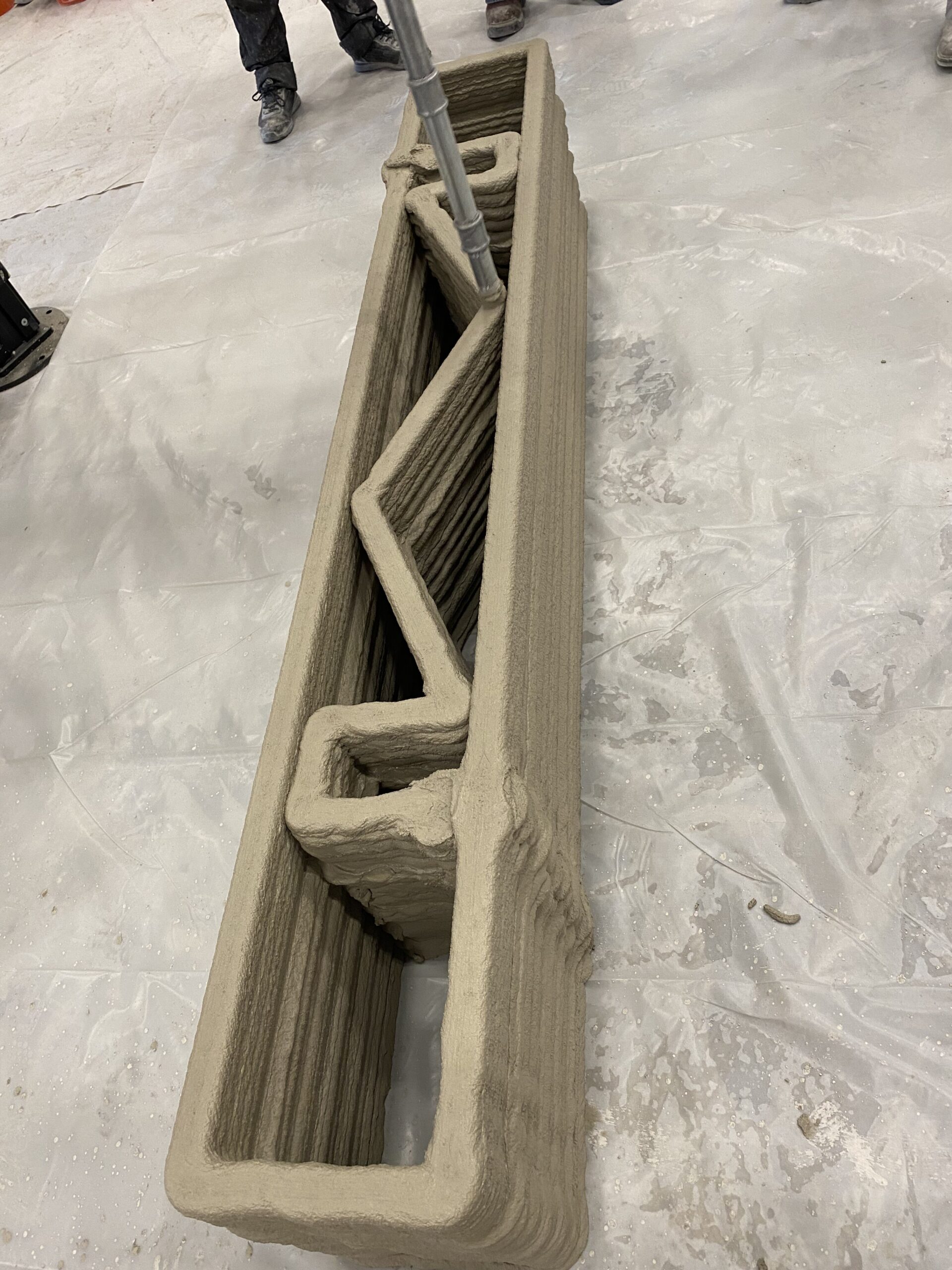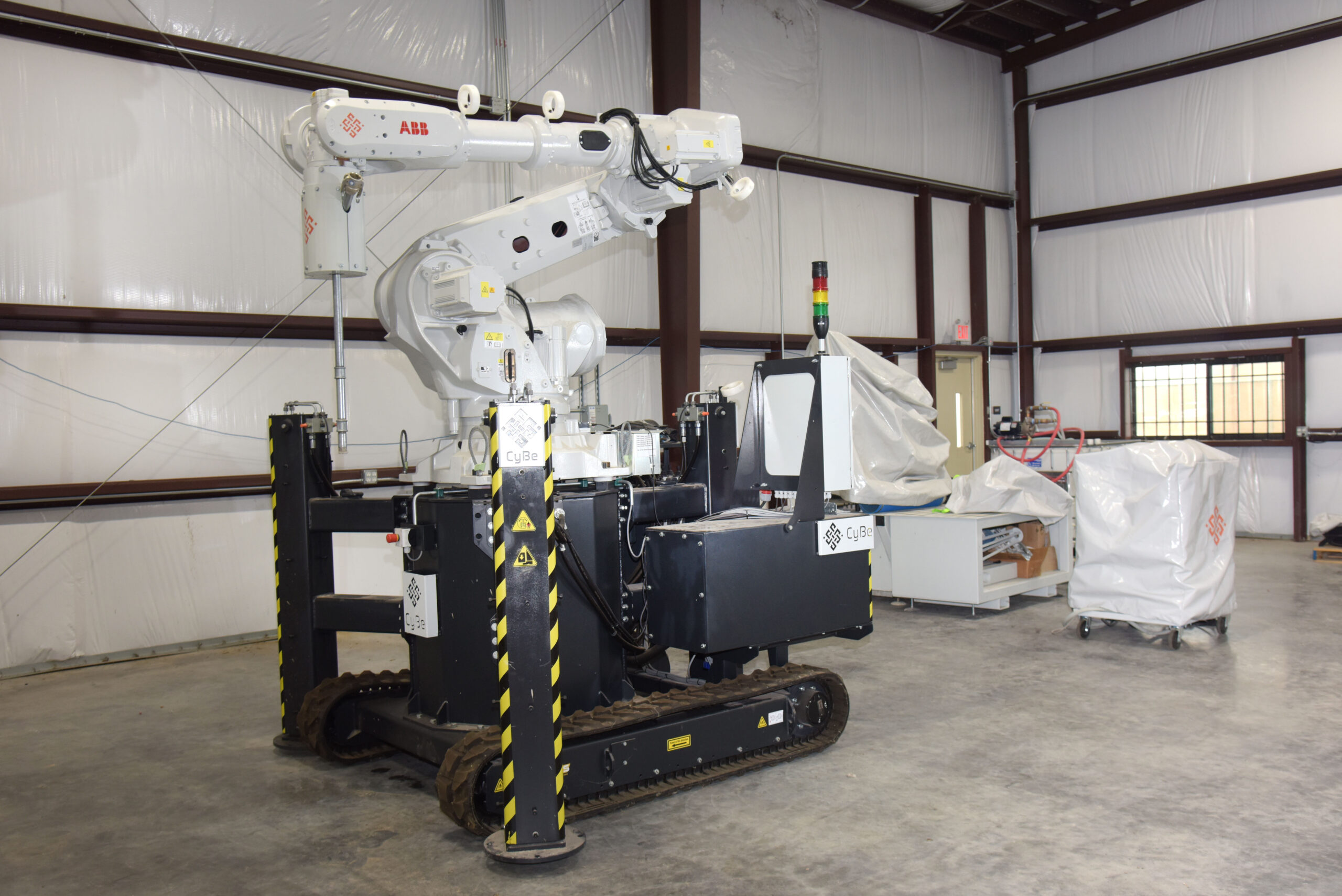Last year, the Center for Infrastructure Renewal (CIR) welcomed the arrival of the CyBe RC (Robot Crawler) 3D printer. Thanks to its robotic arm and “crawling” mechanism, the CyBe RC can move freely, unlike more stationary 3D printers currently on the market, and is capable of printing entire houses. Due to its extended range of motion and ease of maneuvering, the CyBe RC can print both vertically and at an angle while navigating different locations within the building plan.

Dr. Petros Sideris, from the Texas A&M University (TAMU) Civil Engineering department, leads the research conducted with the CyBe RC. His research group focuses on constructing buildings using 3D printing methods and assessing how these structures perform under various climates, conditions, and natural disasters. Dr. Sideris explains, “We explore the development of new structural systems that can withstand gravity, wind, and earthquake loads, leveraging the capabilities and limitations of this technology. Alongside these systems, we develop novel design methodologies, which we validate through computer models and material testing on a larger scale.”

The group’s structural designs emphasize integrating resilience and sustainability while minimizing the construction’s carbon footprint. One approach involves using natural materials as the printing medium, replacing less sustainable materials that have a higher carbon impact. Hempcrete, studied by Dr. Sideris’ research team, serves as an eco-friendlier option that still performs well under environmental conditions, similar to traditional concrete.

The primary objective of their work is to facilitate widespread adoption of construction 3D printing by developing design methodologies and computational tools. Essentially, they aim to create a blueprint for this innovative construction method. Additionally, they hope to address the national demand for affordable housing, especially during the ongoing housing crisis, and apply these methodologies to various construction projects, including bridges, buildings, and other infrastructure.

Collaborating with other Texas A&M University colleagues, such as Dr. Anand Puppala, Dr. Zachary Grasley, Dr. Maria Koliou, Dr. Manish Dixit, Dr. Wei Yan, and Dr. Jeffrey Bullard, these research efforts have attracted sponsorship from the U.S. Department of Housing and Urban Development (HUD), U.S. Department of Energy (DOE), U.S. Department of Education (DOEd), and the U.S. Army Corps of Engineers (USACE). Their combined efforts contribute to advancing sustainable and resilient construction practices.



